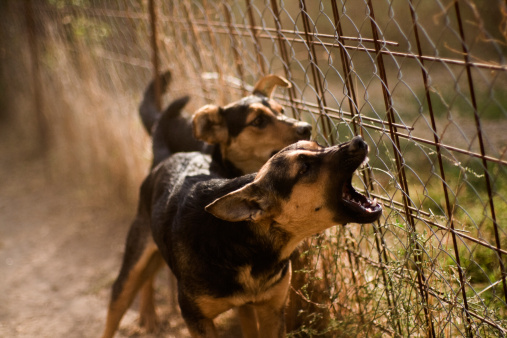Your dog is very good and cute, but he doesn’t like to stay in a crate. If you haven’t trained him to stay in a crate, he will bark and whine all night if you put him in one before you go to bed. This is normal for dogs with separation anxiety. Dogs bark in a crate and whine to let you and everyone else know that they are being separated from their pack. They don’t understand that being in a crate doesn’t mean they are being separated from their pack.
This behavior is very close to an infant’s behavior. It is the onus of the owner to carefully teach him that crate is only a temporary separation and that he is safe inside and that you will not leave him. You need to take care of your pet and handle this situation very carefully. He needs to be assured that you are not leaving him and that you would return back and free him from his crate. Your dog needs this assurance in a very delicate way.

Dogs whine, drool and bark continuously when kept in the crate to show their displeasure. Many dog owners feel sorry for them thinking they are feeling lonely and scared. If you want to crate-train your dog, feeling sorry for him will not help you. It will lead you to do all the wrong things. Treat this as an exercise and an essential part of dog training.
Try the following things to Crate train your Dog:
- It is important to discourage barking and whining. Try the timer approach. Put your dog in the crate and go out of the room. Keep a timer of 2-5 minutes or so and then return back and open the crate. Repeat this process often but stick with the time. He will slowly adjust to the routine and be assured that after a certain time you will come and open the crate. You can increase the time difference slowly.
- While the dog is in the crate try to stroke him gently and verbally praise him. Don’t close the door; instead let him take his time. Closing the crate will give him the feeling of a closed enforced cell which might panic him.
- Train your dog to obey your command. You can use various correction methods like shake-can or pet corrector spray to teach him to stay quiet. Give him a verbal praise whenever he comes out of the crate so that he understands that the outcome of staying inside the crate is always positive and pleasing to his master.
The above mentioned methods are time tested methods but if you find your dog to be extremely panicky inside the crate and drooling, whining to an extent that he may hurt himself inside the crate, it is always advisable to take the help of a vet or a dog trainer. It is extremely important for your dog to accept the crate before you can train him.




